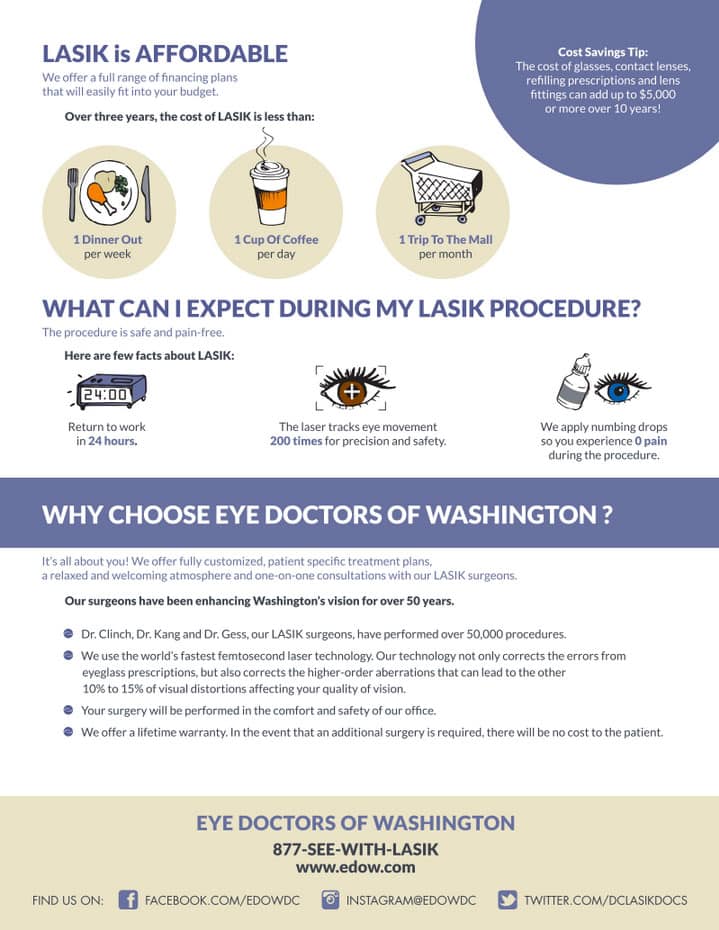Considering SMILE Surgical Procedure? Reveal Considerable Factors To Consider And Insights To Sustain You In Making A Wise Choice Regarding Your Vision In Advance

Content Author-Mullen Cochran
If you're considering SMILE eye surgery, contemplate this: are you prepared to embrace potential aesthetic freedom, or does the idea of any risks make you think twice? visit this link will depend upon a careful equilibrium of considering the benefits versus the unpredictabilities. It's critical to delve deeper into the subtleties of SMILE surgery to make an enlightened selection that straightens with your visual objectives.
Comprehending SMILE Eye Surgical Treatment
When taking into consideration SMILE Eye Surgical treatment, it is essential to understand the procedure and its benefits. SMILE, which stands for Little Incision Lenticule Removal, is a minimally intrusive laser eye surgical treatment that deals with typical vision problems like myopia (nearsightedness).
During the procedure, your eye surgeon will certainly make use of a femtosecond laser to create a tiny cut in your cornea. With this incision, a little disc of tissue called a lenticule is removed, improving the cornea and correcting your vision.
Among the vital benefits of SMILE Eye Surgical treatment is its quick healing time. Many clients experience enhanced vision within a day or two after the treatment, with minimal pain.
Additionally, SMILE is recognized for its high success rate in supplying long-term vision improvement. Unlike LASIK, SMILE doesn't require the creation of a flap in the cornea, decreasing the danger of problems and allowing for an extra steady corneal framework post-surgery.
Understanding the treatment and its advantages is crucial when taking into consideration SMILE Eye Surgery for vision adjustment.
Advantages and disadvantages of SMILE
Thinking About SMILE Eye Surgical procedure for vision correction features different benefits and potential drawbacks.
Among the main pros of SMILE is its minimally invasive nature, as it involves a small cut and generally results in quick healing times. The procedure is additionally recognized for causing marginal pain and dry eye signs and symptoms post-surgery contrasted to other vision improvement methods. In addition, SMILE has been shown to provide exceptional aesthetic end results, with many clients attaining 20/20 vision or far better.
On the other hand, a potential disadvantage of SMILE is that it might not be suitable for people with severe refractive mistakes, as the treatment range is somewhat minimal contrasted to LASIK. Another factor to consider is that the discovering contour for doctors implementing SMILE can impact the schedule of seasoned suppliers in specific areas.
It's important to consider these pros and cons carefully when deciding if SMILE is the appropriate choice for your vision modification demands.
Figuring Out Qualification for SMILE
To determine if you're eligible for SMILE eye surgery, your eye doctor will perform a detailed examination of your eye health and vision demands. During this evaluation, factors such as the security of your vision prescription, the thickness of your cornea, and the general health of your eyes will certainly be examined.
Normally, candidates for SMILE more than 22 years old, have a stable vision prescription for at least a year, and have healthy and balanced corneas without problems like keratoconus.
Your eye doctor will also consider your total eye wellness, any existing eye problems, and your lifestyle needs to establish if SMILE is the ideal selection for you. It's necessary to communicate any kind of particular visual requirements or concerns you may have throughout this examination to ensure that the therapy aligns with your assumptions.
If you aren't eligible for SMILE, your ophthalmologist may advise alternative vision correction alternatives that better fit your private needs and eye health and wellness standing.
Verdict
Ultimately, choosing whether SMILE eye surgery is right for you requires mindful factor to consider of your private eye health and wellness and visual requirements. Consult with your eye doctor to establish your eligibility for the treatment and consider the potential advantages and drawbacks. Keep in mind to connect any type of problems or inquiries you might have during the analysis process to make an enlightened choice about your vision adjustment options.

